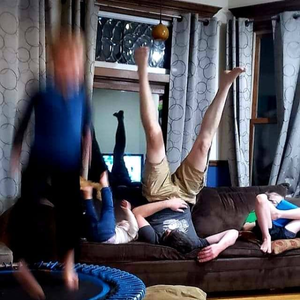Magda Brown: Holocaust Survivor (Bishop Hill, IL)

Sold out!
Magda Brown: Holocaust Survivor6PM potluck/social hour7PM presentation
https://magdabrown.com
Magda Brown is a Holocaust survivor who is on a mission to share her story with as many people as she can.
Magda (Perlstein) Brown was born June 11, 1927, in Miskolc, Hungary. She grew up in a safe, loving home and enjoyed a normal childhood. At the time, Hungarian Jewry as a whole lived in comparative personal and physical safety.
Although an ally of Germany, Hungary initially refused to deport Jews with Hungarian citizenship. However, in March 1944, German troops marched into Budapest with Adolf Eichmann, who was sent to establish special details for implementing the "Final Solution" of the Hungarian Jews.
A few weeks after the Nazi occupation, on March 19, 1944, all Jewish people were concentrated in a designated area, called the "ghetto." After a few weeks, the ghetto was evacuated. The Nazis and the Hungarian police soon created a transition camp in Miskolc, called the "brickyard." Magda and her family received orders to move into this area, where about 14,000 other Jewish people were placed.
On June 11, 1944 – Magda's 17th birthday – she and her family were crowded onto a railroad box car with 80 other people. Each transport held thousands of people, including children and the elderly. They traveled for three days without food, water or any idea where they were being sent. The final destination was the Auschwitz-Birkenau concentration camp in Poland. After arriving, Magda was separated from her mother, father, aunts, uncles, cousins and friends. It was the last time she saw them -- they were sent directly into the gas chambers.
The deportation of Hungarian Jews to Auschwitz-Birkenau started on May 15, 1944 and lasted until July 7, 1944. Nearly 440,000 – half the Jews in Hungary – were deported. On average, 3 out of 4 people in each transport were gassed immediately upon arrival.
After two months of horrendous torture and imprisonment in Auschwitz, Magda was "selected" to be sent to a work camp in August 1944. She was one of a thousand Jewish Hungarian women who were transported to Allendorf, Germany, a sub-camp of the Buchenwald concentration camp and the site of one of Germany’s largest munitions factories. The women worked under dangerous conditions making bombs and rockets, filling them with liquid chemicals. The chemicals turned their skin yellow, their hair orange and their lips purple.
At the end of March 1945, Magda and her group were sent on a death march to Buchenwald. Magda and several prisoners decided that they were going to attempt to escape. They crawled on the ground and hid in a nearby barn. For a day and a half, they hid in piles of straw, knowing that they would be shot if they were caught. Two American Armed Forces then discovered Magda and the other women and liberated them. Magda is forever grateful to these brave heroic soldiers.
After liberation, Magda spent six months in a displaced persons camp in Germany. With the assistance of the United States government, she was able to return to Hungary and search for her family. Out of her extended family of 70, only six cousins had survived. Magda sought to locate her brother, Miklos, who served in the Hungarian military's Jewish labor force, and was captured and imprisoned by the Russian army.
Fortunately, after the war, Magda made contact with her aunts and uncles in the United States, who sponsored her immigration to the U.S. Her family members welcomed her to their home in Chicago in September 1946. It took many years for Magda to overcome recurring nightmares of the Holocaust.
Eventually, Magda was able to put aside the past and build a future. With the help of the National Council of Jewish Women, Magda attended evening classes in American History and English. In 1949, she married Robert Brown and together they raised their daughter, Rochelle, and son, Bruce. Magda was finally reunited with her brother, Miklos, in 1962 -- nearly two decades later.
For 40 years, Magda worked in a physician’s office as a Certified Medical Assistant. Professionally, Magda is an active member and past president of the American Association of Medical Assistants, Illinois Society.
Magda is a member of the Speaker’s Bureau of the Illinois Holocaust Museum & Education Center. Although it is painful to remember her horrendous experiences, she believes her story and others have to be told. The telling and remembrance of survivors’ stories will reassure those who doubt the Holocaust that it was a very real and frightening period in the 20th century.
Visit http://MagdaBrown.com for more information.
